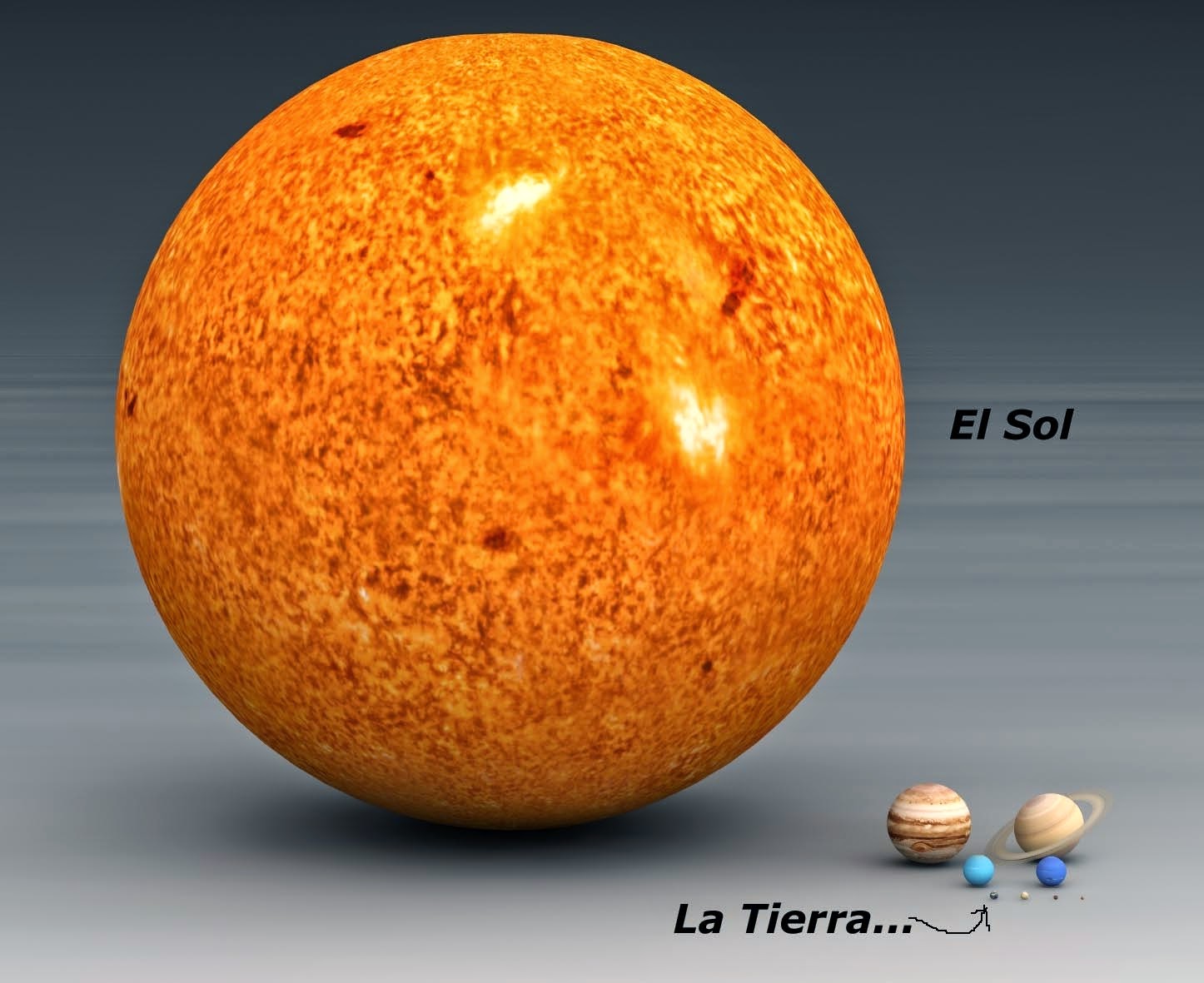How Many Earths Fit In The Sun? Facts & Comparisons
How many Earths could fit inside the Sun? The answer, surprisingly, is over a million. This colossal difference highlights the immense scale of our solar system and the place of our planet within it.
To truly grasp the answer, we must first consider the Sun's colossal size. The Sun, a G2V-type star, is the heart of our solar system, situated approximately 8 light-minutes from Earth. Its sheer volume dwarfs our planet. The Sun's volume is approximately 1,412,000 times greater than Earth's. This means, in simple terms, that over 1.4 million Earths could fit inside the Sun.
Let's delve deeper into the specifics of these celestial giants. Heres a comparison of key characteristics:
| Feature | Sun | Earth |
|---|---|---|
| Diameter | Approximately 1.39 million kilometers | Approximately 12,742 kilometers |
| Volume | Approximately 1.41 x 1018 km3 | Approximately 1.08 x 1012 km3 |
| Diameter comparison | 109 times greater than Earth | - |
| Volume comparison | Approximately 1,305,555 Earths could fit inside | - |
| Orbital Period | - | 365 days |
| Distance from Earth | 8 light-minutes | - |
This vast difference in size is a testament to the scale of the universe. The Sun's diameter, for instance, is about 109 times greater than Earth's. To put it another way, if you were to line up Earths end-to-end across the Sun's diameter, you could fit approximately 109 of them.
The question naturally arises: how does Jupiter compare in size, and how far away is it from Earth compared to the Sun? Jupiter, the largest planet in our solar system, boasts a diameter about 11 times greater than Earth's. In terms of volume, the Sun could contain Jupiter over 1,000 times. Furthermore, Jupiter is much farther away from the Sun than Earth.
Heres a look at how the planets' sizes and positions relate to the Sun. This will further illuminate the topic and bring new understanding to the reader.
| Planet | Diameter (Compared to Earth) | Distance from the Sun (Approximate, in Astronomical Units - AU) |
|---|---|---|
| Earth | 1 | 1 AU |
| Jupiter | 11 times larger | 5.2 AU |
| Neptune | Approximately 4 times larger | 30 AU |
| Saturn | 9.3 times larger | 9.3 AU |
| Uranus | Approximately 4 times larger | 19.8 AU |
The vastness of space and the size of celestial bodies truly boggles the mind. Consider the comparison of sizes; the Sun dwarfs all the planets in our solar system, including gas giants like Jupiter and Saturn, which themselves dwarf Earth. The Sun could engulf more than a thousand Jupiters.
This isn't just about a number; it's about perspective. Understanding the sizes of these celestial objects allows us to appreciate the sheer magnitude of space and the delicate balance that allows life to thrive on Earth. The Sun, a star, provides the light and heat that make life possible for the planet to exist.
The question of how many times Earth fits into the Sun can also lead to other interesting questions. For example, how many Earths would fit into a larger star? While the Sun is enormous, it's not the largest star in the universe. Some stars, like VY Canis Majoris, are so large that the Sun would be a mere speck in comparison. Considering this, the Earth could fit in the Sun over 1 million times, a truly staggering figure.
Another point to note is how long it takes the planet to orbit the sun. Earth takes approximately 365 days to complete an orbit around the Sun. This time is used as a unit of measurement, the year. Other planets have different orbital periods, depending on their distance from the sun. For example, Saturn is 9.3 times further from the sun than Earth, and takes 365 months to orbit the sun, according to the data.
Even among the planets, the size differences are striking. Jupiter is about 11 times wider than Earth. Uranus is roughly 4 times wider than Earth. It's the contrast in size that is truly astonishing. To compare these planets, just imagine Earth as a marble and the Sun as a large beach ball. The difference in size shows us the vastness of the cosmos and the size of our universe.
In conclusion, the answer to the original question is clear: Earth fits into the sun approximately 1,305,555 times. That is to say, the Sun is an enormous entity and Earth is relatively small when compared to the sun. The study of the cosmos can open up new perspectives. By understanding the sizes of the Sun and other planets, we gain a deeper appreciation for our place in the universe. Also, we may continue exploring its many mysteries.
The difference in diameter is also notable. The sun's diameter is approximately 1.39 million kilometers, while the Earth is approximately 12,742 kilometers. This comparison shows why the Sun can hold over a million Earths.
In summary, Jupiter is around 11 times larger than Earth in terms of diameter. Its enormous size makes Jupiter a fascinating object for astronomers. It helps them understand the diversity of the planets in our solar system. This understanding aids in the exploration of the universe.
The relationships between the planets' sizes are interesting. For instance, Earth fits into Neptune about 57 times in terms of volume. It would take about 15 Earths to cover the entire surface of Neptune. These comparisons illustrate the considerable size differences among planets.


